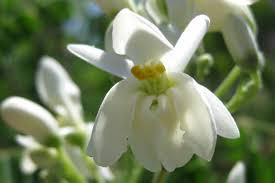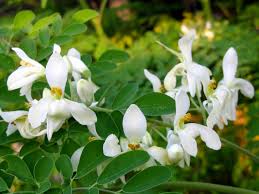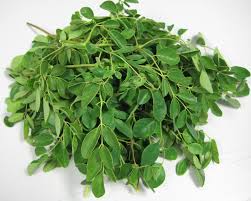Moringa Oleifera- முருங்கைக்காய்
You might want to memorize that name. Why? Because it is a plant that may very well change the world in the near future. The interesting part about it though is Moringa Oleifera, or Moringa has been around for tens of thousands of years and used by civilizations for almost that long. Not only does this tree provide a vast array of nutritional value, but it can also: produce fuel, enhance crop growth, produce livestock feed, purify water and produce medicine!

 Moringa oleifera, known popularly as drumstick tree, is a tropical plant grown for its nutritious leafy-greens, flower buds, and mineral-rich green fruit pods. It is a well-recognized member in the Moringaceae family of trees, and thought to be originated in the sub-Himalayan forests of the Indian subcontinent. It possesses horseradish-like root and, hence, known to the western world as horseradish tree.
Moringa oleifera, known popularly as drumstick tree, is a tropical plant grown for its nutritious leafy-greens, flower buds, and mineral-rich green fruit pods. It is a well-recognized member in the Moringaceae family of trees, and thought to be originated in the sub-Himalayan forests of the Indian subcontinent. It possesses horseradish-like root and, hence, known to the western world as horseradish tree.
Their young, tender seed pods are popular as murnga in Tamil, and malunggay in Philippines.Moringa is a drought tolerant, medium-sized, evergreen tree that prefers warm, frost-free climates to flourish. Its tender leaves and twigs can be harvested at any time from a well-established, 1.5 to 2 meters tall plant. Taller plants bear cream-white, small size flowers in clusters throughout the season, which subsequently develop into long slender dark-green, three-sided, edible seedpods with tapering ends. Each pod measures about 6-18 inches in length with constrictions at the seed nodes giving them a typical drumstick-like appearance. Inside, Fresh tender leaves, flowers, tender pods, and seed-kernels of each pod features fleshy pulp and round pea-sized seed encased inside a wing-shaped coat (hull).
Health benefits of moringa
Moringa plant possesses unique nutritional qualities that hold promise to millions of impoverished communities around the world who in need of nutritional supplements like protein, minerals, and vitamins.

Moringa greens (leaves) are an excellent source of protein which is a unique feature for any herbs and leafy-greens in the entire plant kingdom. 100 g of fresh raw leaves carry 9.8 g of protein or about 17.5% of daily-required levels. Dry, powdered leaves indeed are a much-concentrated source of several quality amino acids.
Fresh pods and seeds are a good source of oleic acid, a health-benefiting monounsaturated fat. Moringa, as a high-quality oilseed crop, can be grown alternatively to improve nutrition levels of populations in many drought-prone regions of Africa and Asia.

Fresh leaves and growing tips of moringa are the richest source of
vitamin A. 100 g of fresh leaves carry 7564 IU or 252% of daily-required levels of vitamin A! Vitamin A is one of the fat-soluble anti-oxidant offering several benefits, including mucus membrane repair, maintenance of skin integrity, vision, and immunity.
Fresh moringa pods and leaves are an excellent sources of vitamin-C. 100 g of pods contain 145 µg or 235% of daily-required levels of vitamin-C. 100 g of greens provide 51.7 µg or 86% of daily-recommended intake values of this vitamin. Research studies have shown that consumption of fruits/vegetables rich in vitamin C helps the body develop immunity against infectious agents, and scavenge harmful oxygen-free radicals from the body.
The greens as well as pods also contain good amounts of many vital B-complex vitamins such as folates,vitamin-B6 (pyridoxine), thiamin (vitamin B-1), riboflavin, pantothenic acid, and niacin. Much of these vitamin functions as co-enzymes in carbohydrate, protein, and fat metabolism.
Furthermore, its greens (leaves) are one of the finest sources of minerals like calcium, iron, copper, manganese, zinc, selenium, and magnesium. Iron alleviates anemia. Calcium is required for bone mineralisation. Zinc plays a vital role in hair-growth, spermatogenesis, and skin health.
are edible.Fresh moringa pods and greens can be readily available in the markets all around the season in the tropical and sub-tropical countries of South-East Asia, Philippines, Middle-Eastern, Africa, Caribbean, and in some Central American region. In the USA, the tree grows easily in the Southern states; however, only few owners grow them in their backyard. Its consumption in the USA is mainly driven by several thousand expatriated communities of Asian and African background who prefer M.oleifera in their diet.

Fresh leaves, pods, seed-kernels can be found in the farmers markets. Dry moringa leaf powder in bins, packs can be found in some specialized stores. At their nativity, moringa leaves are one of the inexpensive greens available in the markets. However, fresh pods and seeds command good price even in the native Asian and African markets.
While buying fresh pods; look for just tender, uniform, evenly full, green color pods. Avoid dry, shriveled, bent, twisted, or broken pods. Do not by over-mature big size pods as they feature tougher skin, bitter pulp and hard seeds and thus unappetizing.
At home, moringa leaf should be stored as any other greens. Pods can keep well for 1-2 days at room temperature, however, should be kept inside the refrigerator for extended shelf life.
Dried moringa leaf powder and capsules are also sold in the stores for their advocated health-benefits across Europe and North Americas.
Safety profile

Although moringa plant parts confer many health-benefiting qualities, it is advised to use them as a vegetable and not as medicine. Some traditional medicines and pharmaceuticals broadcast various healing properties of M.oleifera, which are yet to be approved by scientific and research medical fraternity around the world. Moringa root contains alkaloid
spirochin, which is a potential neuro-paralytic toxin. Its leaves when eaten in large quantities may cause stomach upset, gaseous distension and loose-stools due to their laxative properties.
Interesting Facts
www.malaysianherbals.com
Moringa Oleifera leaves can prevent at least three hundred known diseases in the world.
– In many parts of the world, its used leaves are used for cleaning utensils and walls.
– Wood pulp of Moringa Oleifera tree is used for making newsprint also.
– Seeds of this tree are eaten like peanuts in Malaysia.